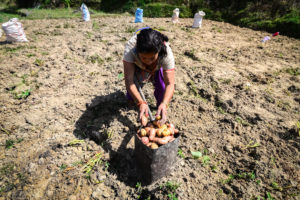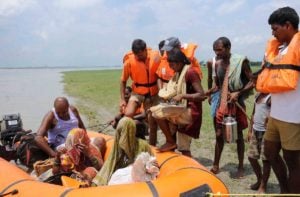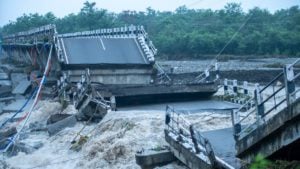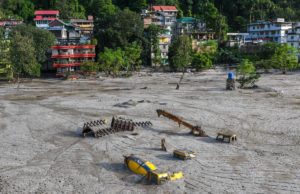Shila Devi Tharu, a 47-year-old farmer in western Nepal, frequently loses her rice crop to floods. “Almost every year my rice fields are inundated, damaging the crop partially or fully,” says Tharu, who cultivates 1.2 acres of land in the Karnali river basin of the Bardiya district.
Thauru receives compensation from either the provincial government or the municipal authorities, as a one-time grant of rice, oil, salt and other provisions. The level of compensation required is determined by these authorities but, while she welcomes the support, Tharu says it never completely offsets her losses.
Climate change and floods in Nepal
In recent decades, landslides have claimed the most human lives in Nepal, but floods occur with a greater frequency and affect more people. Nepal, which accounted for less than 0.1% of the total amount of greenhouse gasses emitted globally during 2020, is suffering disproportionately from climate change. According to a 2021 report by Nepal’s Ministry of Forests and Environment: “Weather or meteorological events increased temperatures, and hazards such as erratic rainfall, drought, and floods caused by them account for approximately 90 percent of crop loss in Nepal.”
This aligns with a 2014 special briefing on Nepal by the Intergovernmental Panel on Climate Change, which forecast an “increase in economic losses from weather- and climate-related events”. In 2019, Nepal’s climate change policy made provisions for climate-induced disaster insurance in agriculture and animal husbandry; the government currently provides subsidies covering 75% of crop and livestock losses.
Unfortunately – as Tharu has found – the premiums on these insurance policies are high and the payouts insufficient.
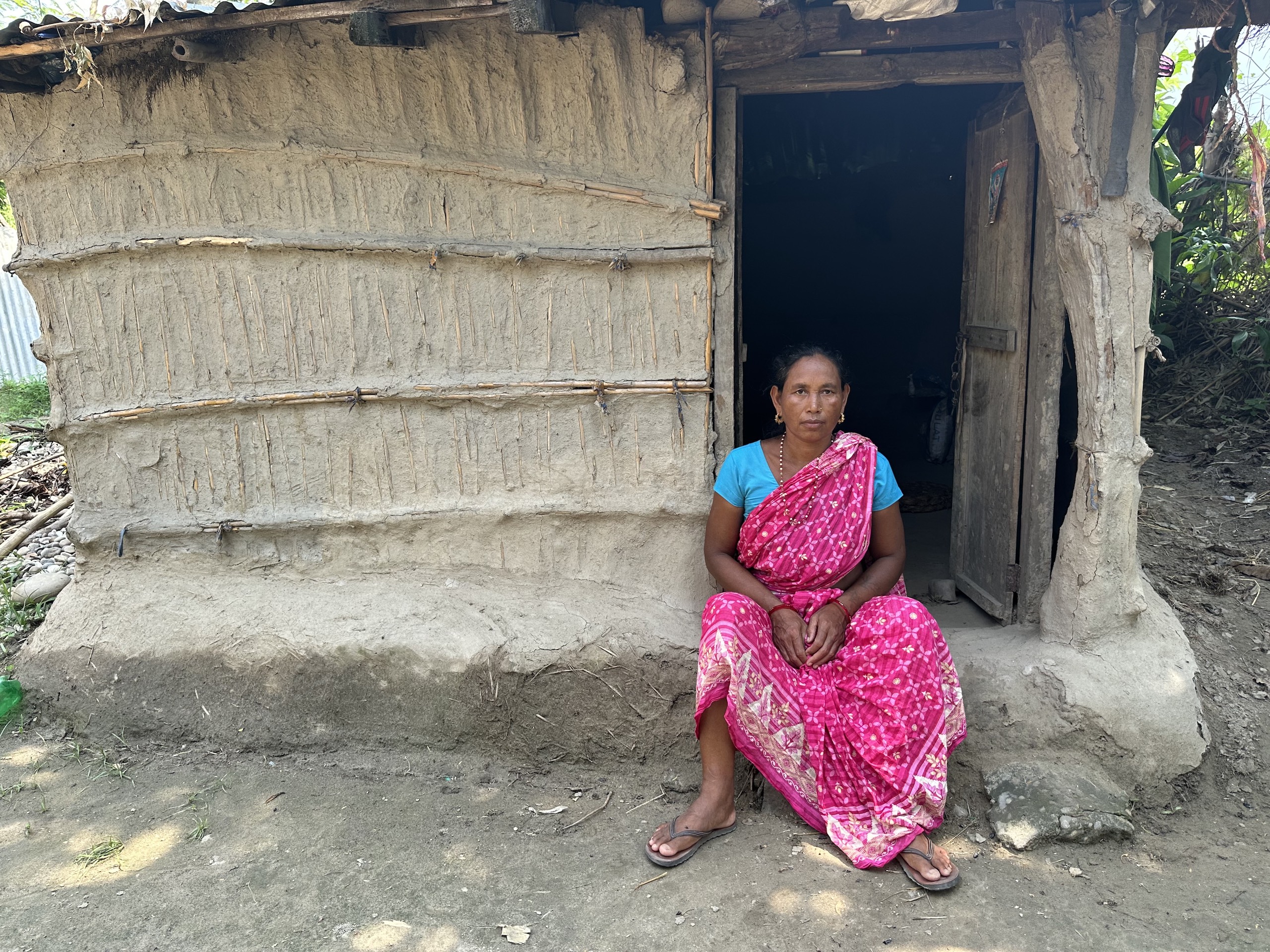
Automatic payout thresholds
This year however, Tharu’s predicament eased. Under a new, index-based flood insurance scheme initiated by Practical Action – a civil society organisation – in collaboration with Shikhar Insurance, Tharu automatically qualified for a payout of NPR 3,600 (USD 27) when water levels on her farmland exceeded 10.8mm across 0.1 acres; the premium for this policy was NPR 1,000 in 2022.
Ramesh Gautam from Practical Action South Asia says the organisation modelled weather data for the index and helped to develop its automatic payout thresholds. Gautam adds that Practical Action’s main role has been in helping to build awareness about the scheme among farmers.
The automatic payout approach sidesteps the need for a claimant to prove their losses and for the provider to undertake lengthy verifications. Instead, the insurer references data provided by Nepal’s Department of Hydrology and Meteorology. This form of flood insurance was introduced in Bardiya district in March 2021, among 935 farmers across 12 cooperatives. It has since been extended to Kailali district in southwestern Nepal and now covers 4,278 farmers across 46 cooperatives.
The Third Pole spoke to Bikram Rana, Practical Action’s index-based flood insurance project manager: “Farmers were reluctant to insure their crops before, as they had to go through a complicated process for the payout.” He adds that this alternative payout process is simple and transparent, and more farmers are being attracted.
Challenges and incentives for insurance companies
Though this scheme benefits farmers, the data suggests it may not prove profitable for insurers as flood events become more frequent. According to Shikhar Insurance’s Bardiya branch head Dhundiraj Rijal, the company paid out almost NPR 3.5 million to farmers in Bardiya last year, but collected just NPR 900,000 in premiums. Rijal tells The Third Pole that he doubts reinsurance providers would continue supporting index-based insurance schemes if such losses occurred more frequently in the future.
Often called “insurance for insurance companies”, reinsurance is taken out by insurance companies against their own schemes, in case they award larger-than-anticipated payouts.
As climate change leads to greater losses, the insurance industry – and particularly reinsurers – face increasing volatility. Key actors are highlighting the challenge, such as the ratings agency S&P and one of the world’s largest reinsurers, Munich RE.
Poorer countries such as Nepal, which have comparatively weaker disaster information flows on which to base risk analyses, find it particularly challenging to secure reinsurance.
Rijal tells The Third Pole that one of the current scheme’s shortcomings is that it only covers one river basin, the Karnali. “Expanding the scheme to many other river basins would minimise the risk as there are lesser chances of [large flooding] in all the rivers at the same time,” he says.
For Shikhar Insurance however, index-based insurance schemes have pros as well as cons. According to Rijal, insurers can save significant resources because there is no need for post-disaster assessments. This is why Shikhar Insurance has been slowly expanding its weather-based insurance schemes since launching its first product of this nature in May 2016: the policy was sold to apple farmers in the district of Jumla, who qualify for a payout if less than 60mm of rain falls between the first week of April and the first week of June.
This apple farming policy uses approximately 25 years of rainfall data from Nepal’s Department of Hydrology and Meteorology to model crop production shortfalls, says Shikhar Insurance’s Jumla branch manager, Deepdarsan Fadera. He tells The Third Pole that this scheme has grown from 35 to 4,200 policyholders and now includes the neighbouring districts of Mugu and Dolpa.
The success of this scheme encouraged Shikhar Insurance to offer index-based drought insurance in Jumla from 2019: if annual rainfall is less than 800mm, covered farmers are entitled to a payout. About 10% of the farmers in Jumla have opted for the scheme so far.
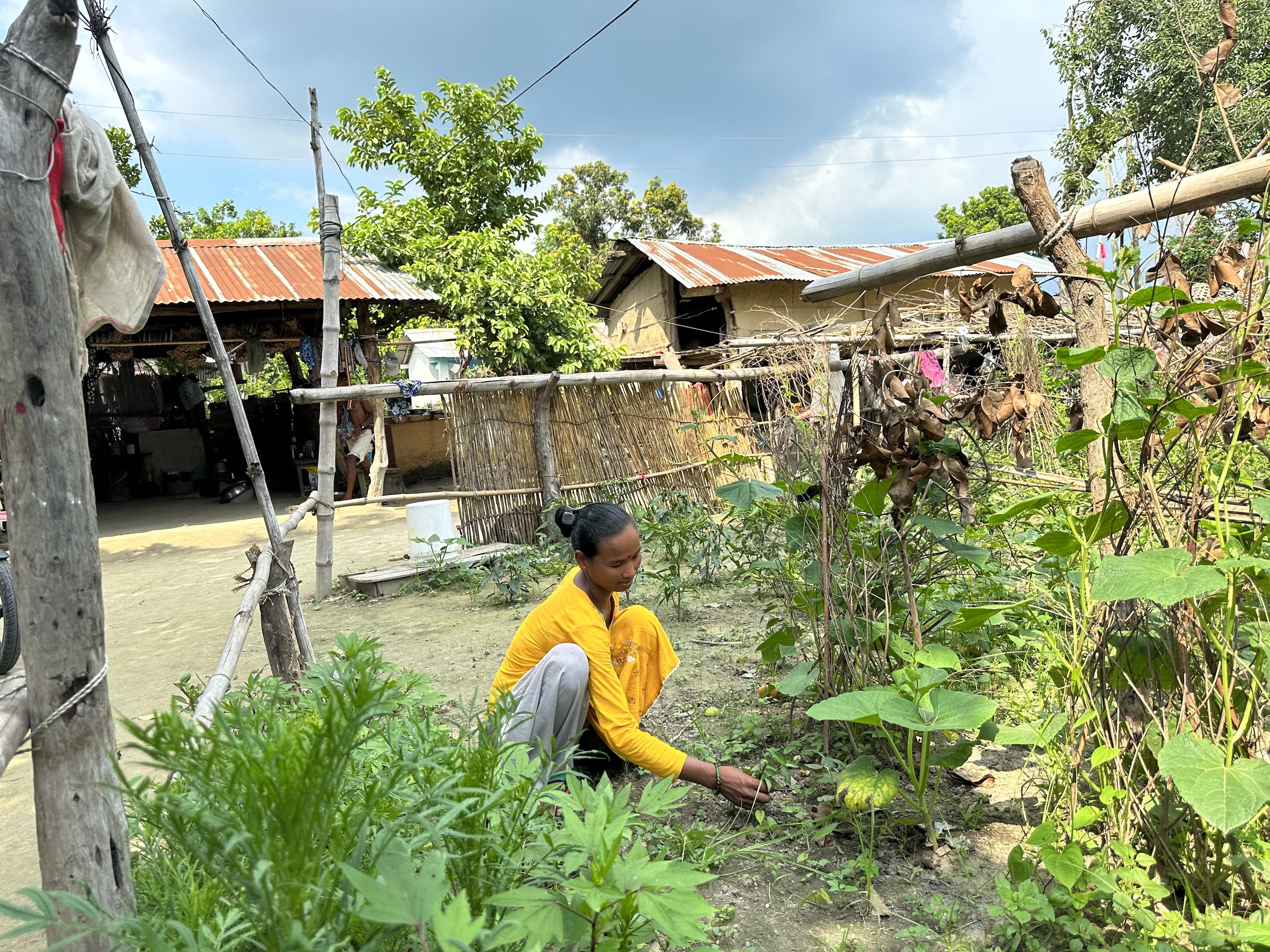
Reluctance to offer index-based insurance
Despite the apparent success of Shikhar Insurance’s weather-based index schemes, no other insurers are jumping in. The major reason, according to Fadera, is that the government does not provide the subsidies for these schemes that it does for others. The second big reason, says Fadera, is that Nepal simply does not have enough weather stations to provide the long-term data that these indices require.
Another major obstacle to index-based insurance in Nepal has been governmental permission, says Gautam. Historically, the authorities have been granting permission per year and per region only. According to Gautam, the government is increasingly willing to grant permanent permissions, which could prompt other companies to offer these products. One such company could be Himalayan Everest Insurance. Its head of crop and cattle insurance, Manohar Adhikari, tells The Third Pole that they are preparing a pilot project to test the concept.
Others remain cautious, such as Krishna Timsina at the Nepal Agricultural Research Council. Speaking to The Third Pole, Timsina is reticent to claim success for weather-based index insurance “based on the results from a few places”.
“There is no doubt that the product is beneficial from the view of farmers if designed properly, but the major challenge remains in the designing, and in developing infrastructure for its implementation,” Timsina adds.
The major complication is that every part of the country needs to have different policySusil Dev Subedi, Nepal Insurance Authority
One such design flaw is to only track total rainfall across a certain period. This means farmers are not compensated if very heavy rainfall is interspersed with very dry periods, which also causes crop losses.
Such considerations were underlined by a weather-based index insurance study published in 2022, which used mid-season rice yields data from China’s province of Anhui. It concluded that the success of this type of insurance demands detailed data, namely month-by-month records of crop yields in relation to weather events. The study also offered cautionary tales: “despite substantial premium subsidy (often in excess of 60%), index-based insurance piloted in Malawi and India has not been very successful, with participation rates of only 20-30%.”
Timsina says much more consultation with “stakeholders from different fields” is needed to design products fit for the varied impacts of climate change. Furthermore, Timsina says real-time data from weather stations within five kilometres of insured areas is necessary.
Installing so many weather stations to make this product available to farmers in many parts of Nepal would be financially difficult for the country.
“If we can overcome the challenges of proper product design and sufficient infrastructure through the involvement of every governmental and non-governmental sector, farmers could get a valuable weapon to fight the damage of a changing climate,” concludes Timsina.
This is in line with findings elsewhere: Thailand was one of the first Asian countries to offer weather-based index insurance, where a 2022 study concluded that “cooperation between the public and private sectors in promoting weather insurance as a critical measure to protect farmers” was key to its success. The study, which looked at sugarcane, rice, palm oil and rubber crops, confirmed that weather-based index insurance could substantially reduce the potential risks of climate change for farmers.
Limited government support
The government’s insurance regulatory body, Nepal Insurance Authority (NIA), is currently studying index-based models. “It is easier to attract farmers to this policy as there are no hassles in the claim-settlement process,” Susil Dev Subedi tells The Third Pole. However, Subedi, who directs the NIA’s agriculture, micro-insurance, reinsurance and research division, is also cautious: “The major complication [to expanding the scheme] is that every part of the country needs to have different policy, as the weather events are different in different places.”
According to Subedi, the government does not have immediate plans to subsidise such schemes, as it does for traditional insurance schemes.
Meanwhile, it will continue to be difficult for farmers in Bardiya to afford index-based insurance premiums without state support. That includes Anita Chaudhary, who tells The Third Pole she insured approximately 0.1 acres of her land with an index-based insurance policy, because her fields lie in a flood-prone area. In 2022, her premium was NPR 750 and she was rewarded NPR 2,700 in payouts when the floodwaters arrived. For now, however, Chaudhary still has another 2.3 acres that she cannot afford to protect.
